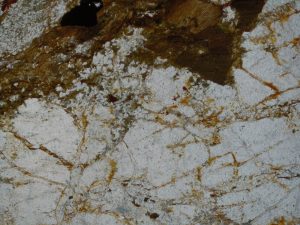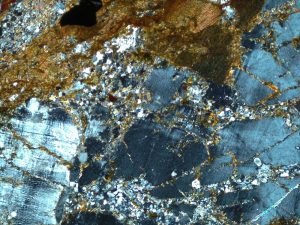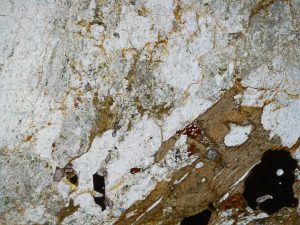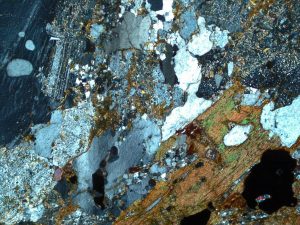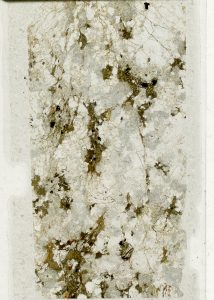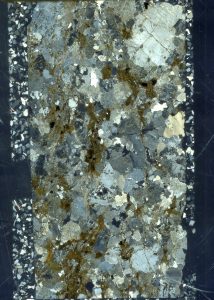Southwestern Virginia Case Study
Cranberry Gneiss (Orthogneiss)
Elizabeth A. Johnson
Outcrop and Hand Sample Photos and Videos
No outcrop images available. This was collected near Independence, not too far away from the other Cranberry Gneiss sample (next page).
The classic interpretation of the Cranberry Gneiss is that it is a paragneiss (sedimentary protolith). This is true in many places, including sample S5 (next page). However, the Cranberry Gneiss on this page is pretty clearly an orthogneiss (igneous protolith). Field mappers in the area are now starting to distinguish between these two types of gneisses.
Thin Section Photos and Videos
Click on the image to make it larger. 1st = plane polarized light; 2nd = cross-polarized light.
Spot 1
Biotite (brown), orthoclase, recrystallized quartz.
Spot 2
Biotite,quarts, magnetite, plagioclase, dusty orthoclase, a zircon (inside the magnetite at bottom right).
Entire thin section scan. 1st = ppl; 2nd = xpl. Click on the image to make it larger.
Media Attributions
- Cranberry 4x ppl no1
- Cranberry 4x xpl no1
- Cranberry 4x ppl no2
- Cranberry 4x xpl no2
- Cranberry ppl
- Cranberry xpl

